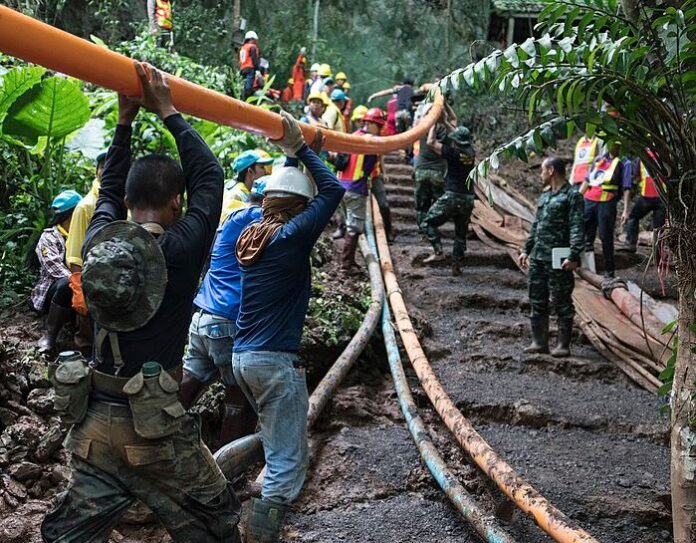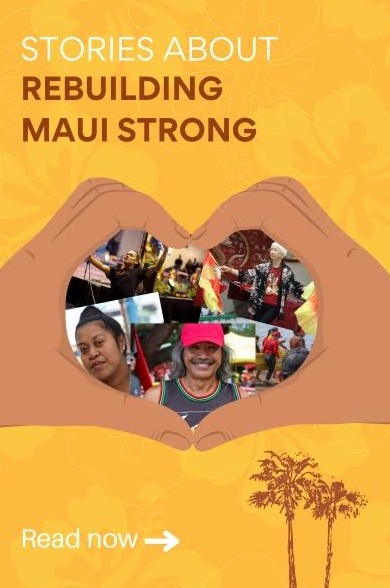By Jana Monji, AsAmNews Arts & Culture Reporter
In their latest documentary, The Rescue, Academy Award-winning directors Elizabeth Chai Vasarhelyi and Jimmy Chin dive into the 18-days when the world waited and watched, transfixed over the 2018 search and rescue for 13 people–12 boys and their assistant soccer coach–lost deep in a Thai cave system.
The documentary acknowledges the leadership of British and Australian expert cave divers, but avoids the White Savior trope by emphasizing the reality of intensive teamwork.
New York City-raised hapa Vasarhelyi (father Hungarian and mother Hong Kong Chinese) met Chin in 2012, after she had already racked an impressive list of festival awards including a Tribeca Best Documentary Feature (for A Normal Life in 2003) and at TIFF Special Presentation for Youssou N’Dour: I Bring What I Love, a documentary about Senegalese icon Youssou N’Dour as he worked on his Grammy Award-winning album Egypt and promoted Islam.
Chin’s parents were from Mainland China and settle in Minnesota where Chin was born. By the time Chin met Vasarhely, he had already participated on National Geographic expeditions and become a photographer as well as a cinematographer and a world-class climber. Chin’s climbing experiences on Shark’s Fin route on Meru Peak in the Indian Himalayas in 2008 and again in 2011, would become the subject for his first join project with his soon-to-be wife, the 2015 Meru.
The couple married in 2013. It was their 2018 documentary Free Solo about rock climber Alex Honnold, that brought them major awards, including Best Documentary at the Academy Awards.
While The Rescue can’t take advantage of Chin’s professional level skills in skiing or mountain-climbing, it is informed by it. Looking at the opening shots of Meru“made me shiver and wonder why anyone would do this for fun. In the documentary, the cave divers who headed the rescue are interviewed individually and attempt to answer what drew them to the dangerous cave-diving as a hobby.
Looking at the cave divers who came on as experts, all older White men, you wouldn’t think them as the answer to an extreme emergency compared to the fit and much younger Thai Navy SEALs team.
Among the people interviewed were British divers John Paul Volanthen, now 50, and Richard Stanton, now 60, who are also part of British cave rescue organizations. Volanthen’s day job is in IT. Stanton was a firefighter for 25 years before retiring.
Another team member, Jason Mallinson, 52, is a British power station engineer who studied mechanical engineering at the University of Portsmouth.
Craig Challen and Richard Harris were not only Australian technical divers and cave explorers, but also doctors. Challen is a veterinarian. Harris is an anesthetist. Together, their knowledge of cave diving, sedatives and behavior helped in planning how to get the kids out.
This documentary takes pain to explain why cave diving is such a specialized endeavor and what makes these men pursue it. This documentary also takes into account why the 37-year-old former Thai Navy SEAL, Saman Kunal died (Another Thai Navy SEAL, Beirut Pakbara, died several months later as a result of a medical condition related to the rescue operation).
The documentary also gives us the views of the Thai people in charge and involved such as Weerasak Kowsurat, Minister of Tourism and Sports of Thailand (2017–2019); Thai American Ruengrit Changkwanyuen, regional information technology launch manager for GMI Manufacturing and Labor at General Motors’ Thailand Rayong Plant, and the Thai Navy SEALs.
Changkwanyuen was born in Thailand, but his family moved to the US when he was 12. He learned to dive in the US and eventually became a dive master according to an article in the Detroit Free Press.
Changkwanyuen had previously worked on body recovery and for this particular cave rescue “became a liaison and coordinator between the SEAL divers and all the dive teams, including special forces from China, The US Navy and Australia.” At this point Changkwanyuen had moved back to Thailand and was working for GM.
Tham Luang Nang Non cave (Great Cave of the Sleeping Lady) in Chiang Rai Province in northern Thailand is a karstic cave system in a forest park. Graphics help us understand just where the mouth of the cave was compared to where the divers finally found them.
The re-creations are realistic and, along with footage from the actual rescue, provide the pressing feeling of claustrophobia and urgency and danger. Where the documentary doesn’t go is the Elon Musk Twitter dispute against Vern Unsworth. Nor does it go into the Musk and mini sub saga. The documentary also doesn’t add a more positive note: The Thai Navy SEALs have introduced cave-diving as part of their training.
You might lament that we don’t hear from the 13 people who waited to be rescued, but that is another story for another day and another documentary. Some of the boys were stateless and benefited from the publicity surrounding their rescue. The oldest, Phiraphat Somphiangchai, celebrated his 17th birthday in the cave. The youngest, Chanin Wibunrungrueang, was 11. Perhaps in 10 years, when they all are adults, they’ll have enough perspective to revisit a time when their lives were the focus of an international effort.
The Rescue does a good job of avoiding the White Saviour trap, emphasizing that this was an effort made by many people of which the lead experts happened to be White men from the UK and Australia. Loners obsessed with extreme sports in their downtime can become heroes, too.
The film made its world premiere at Telluride. The National Geographic documentary also screened at the 2021 Toronto International Film Festival late in September and the Los Angeles Asian American Pacific Islander Film Festival. The film was released in the US on October 8, 2021.
AsAmNews has Asian America in its heart. We’re an all-volunteer effort of dedicated staff and interns. Check out our new Instagram account. Go to our Twitter feed and Facebook page for more content. Please consider interning, joining our staff, or submitting a story or making a contribution.




